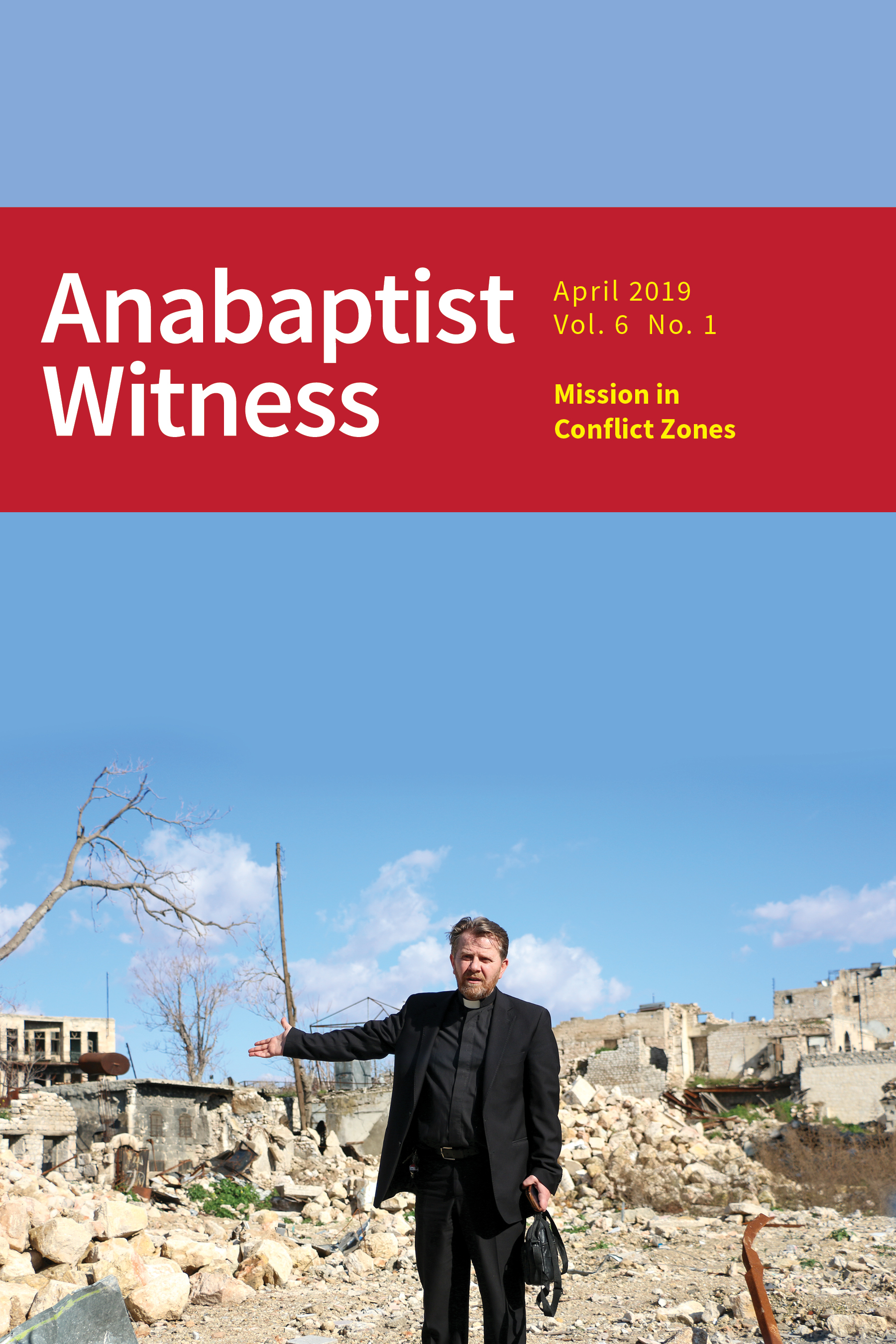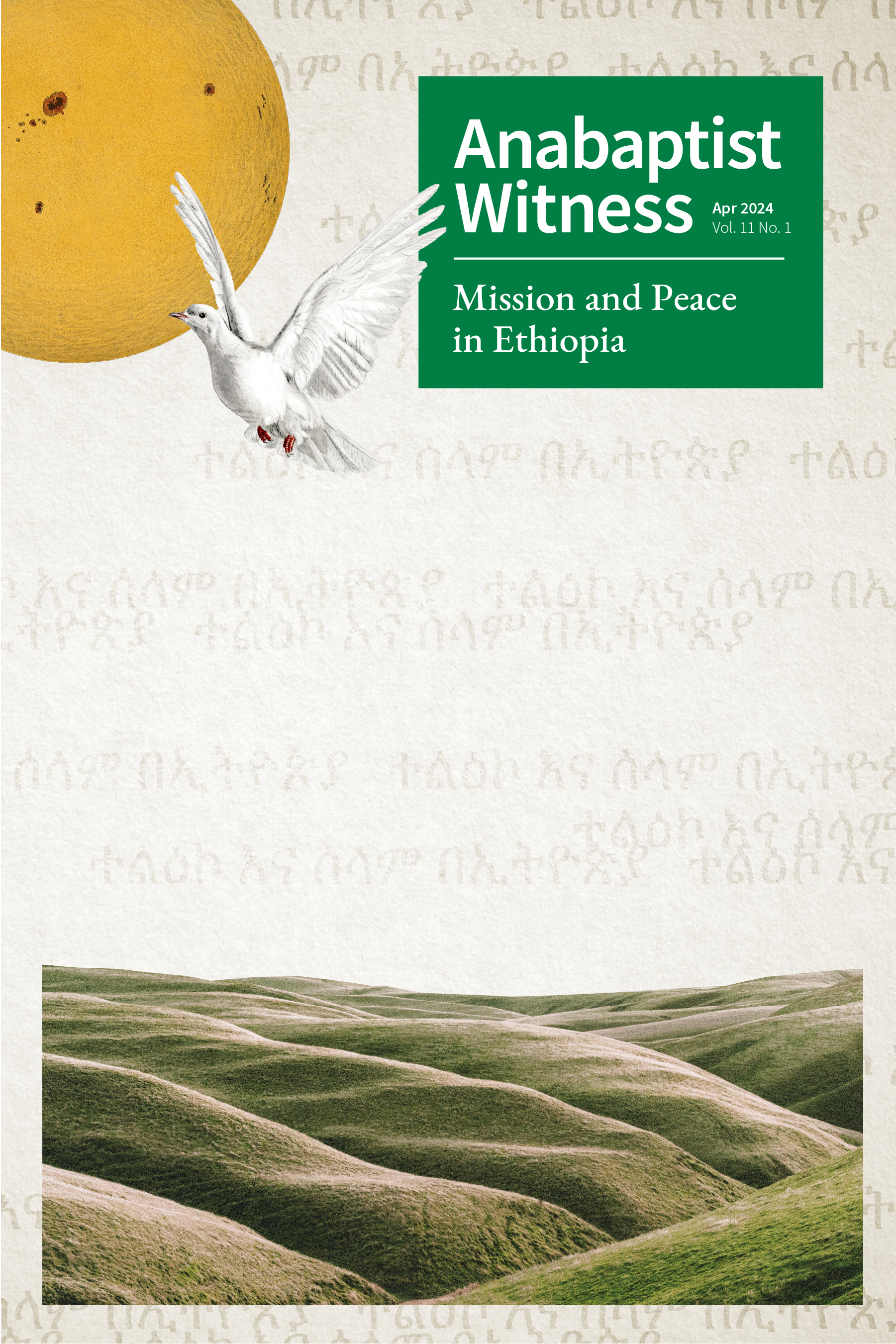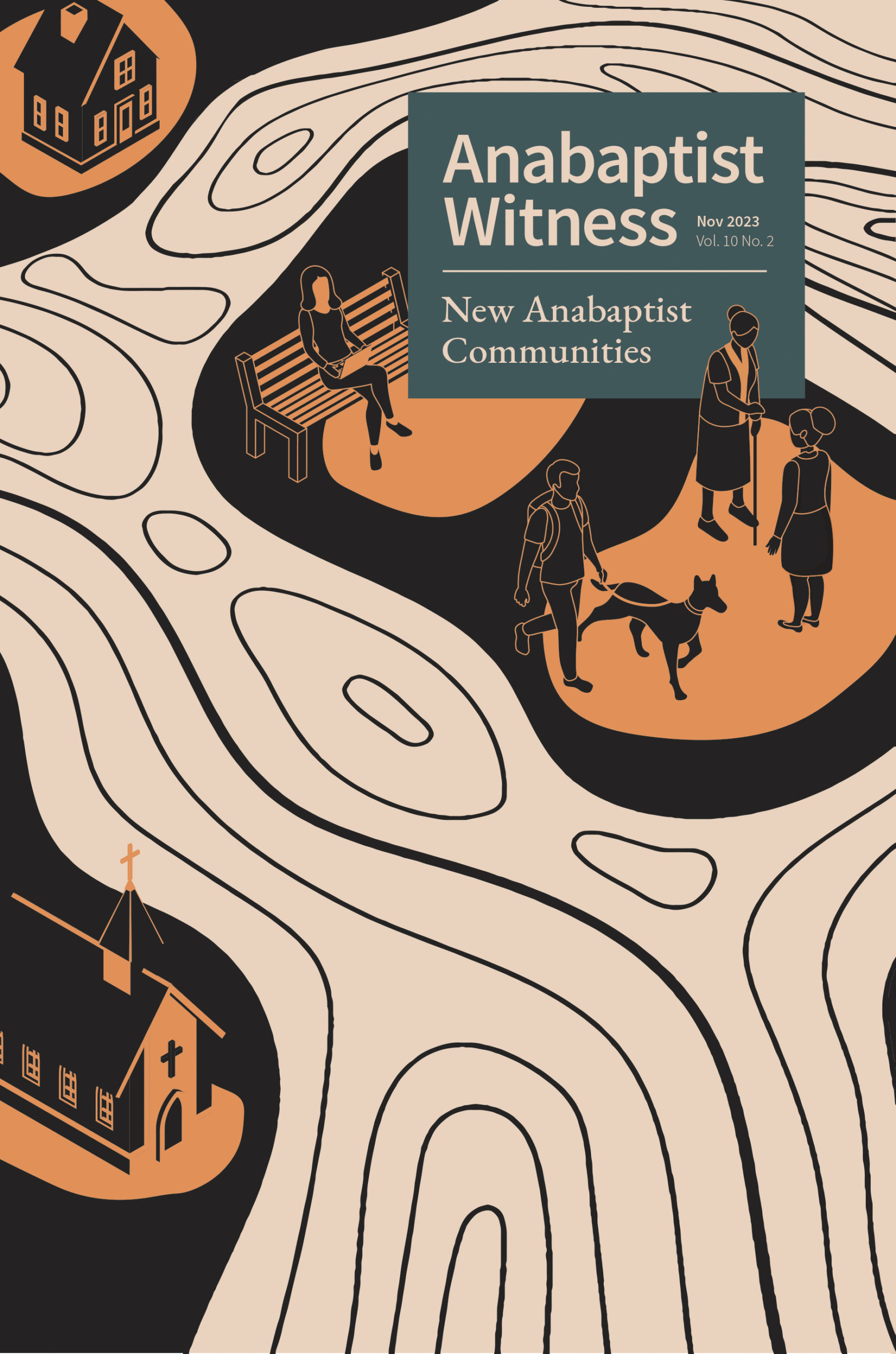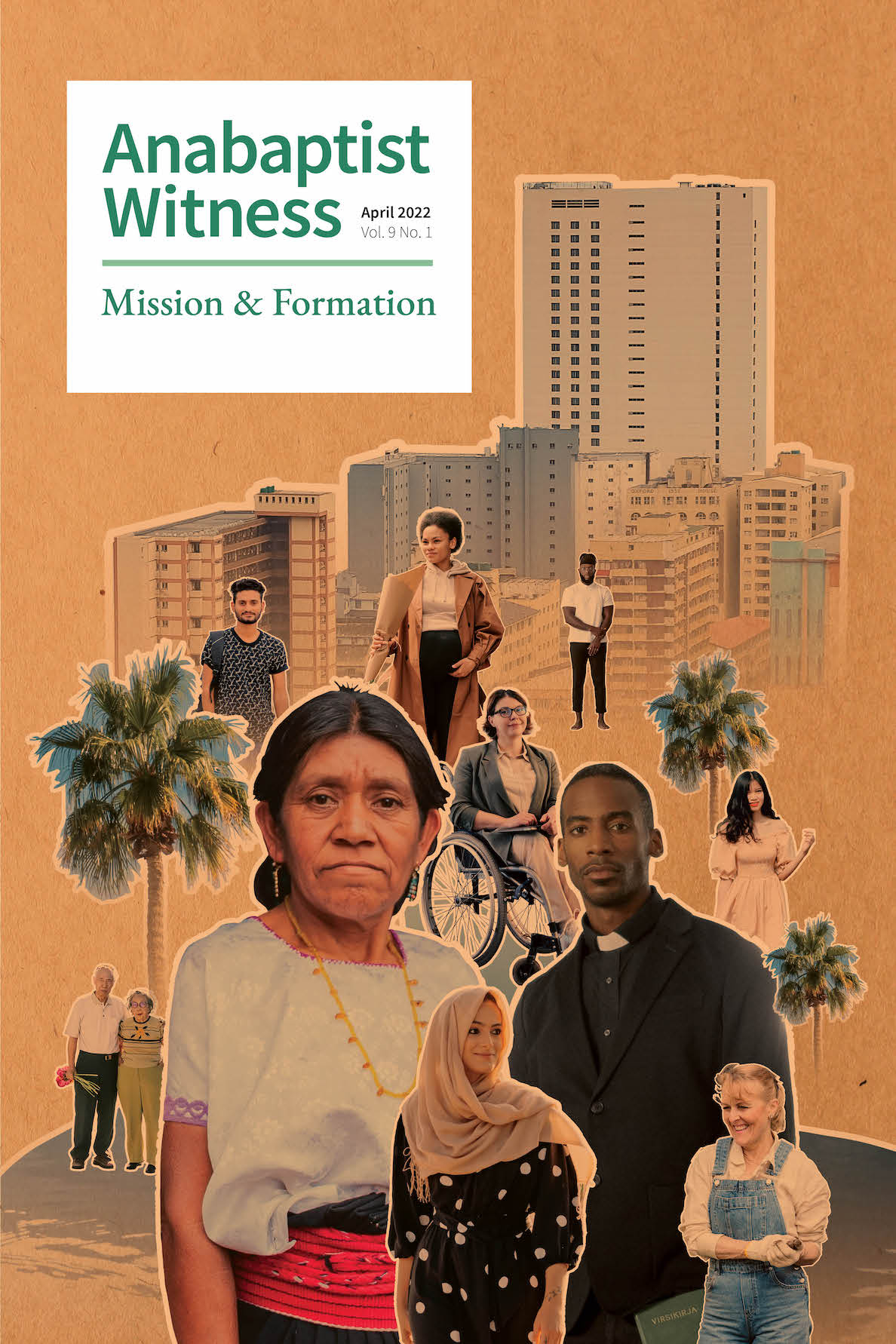Mission in Conflict Zones
About This Issue Download this issue
Mission in Conflict Zones
As I glance out of the window of my office at Anabaptist Mennonite Biblical Seminary (Elkhart, Indiana), I’m tempted to imagine that I’m participating in a form of witness far from the realities of conflict that birthed the Anabaptist movement. This sunny spring day is, for me, untroubled by fears of imminent bodily harm, of suspicion that a government or other opposing group is hunting me, of an urgent need to flee for my safety. Whereas many early Anabaptists suffered torture and execution, that is not a serious possibility for me or for most of my colleagues and students. Whereas many early Anabaptists met in secret, if at all, the seminary announces its presence with signage on nearby roads and highways. Moreover, the seminary community has been settled in this location for sixty years and confidently plans for a long future here.
This glance to the world I inhabit raises questions for me that are often asked by and about Anabaptists during peacetime: Is our safety a function of our compromised convictions? If we were really dedicated to Anabaptist witness, wouldn’t we be persecuted? Or, alternatively, does the reality of peaceful North America (and Europe and elsewhere) suggest that “pacifism” doesn’t mean much today, that Anabaptist proclamations about nonviolence are hollow and cheap?
By exploring the character of Christian mission in specific conflict zones, the articles in this issue of Anabaptist Witness help us move toward a response to these questions. Elias Ghazal learns from Jesus about resisting tyranny nonviolently in Yemen, and Alain Epp Weaver sees signs of Christ’s ascension in the two-thousand-year witness of the Syrian church. Andrew Bush and Johannes Reimer each offer theologies of mission for “a world at war,” with Bush reflecting on his long experience on the West Bank and Reimer on recent work in Ukraine.
Retired medical missionary Wally Shellenberger reflects on his experience during the Biafran War in Nigeria in the late 1960s. Shellenberger draws from letters and diaries to offer a portrait of mission under conditions of conflict. Kathryn Smith Derksen in turn investigates issues raised in her current mission assignment in South Africa; in particular, she shows how Anabaptist conceptions of “peace” must be shaped in conversation with local victims and survivors of racialized conflict.
The final three articles emerge out of the Latin American context. Daniel Moya and Peter Wigginton both look at the aftermath of the Colombian conflict. Moya utilizes a framework shaped by restorative justice and conflict transformation to investigate possibilities for communal restoration. Wigginton examines the highly politicized setting in which the Colombian church responded to the 2016 referendum on the peace accords. Luis Aránguiz Kahn and Elvis Castro Lagos focus on the Chilean government’s ongoing conflict with indigenous Mapuche communities, suggesting that Anabaptist theology might provide guidance for Pentecostals caught up in the violence.
These articles might prompt one to respond to the “hard questions” about Anabaptist witness today by emphasizing how Anabaptists around the world are engaged in costly mission in conflict zones. Some of these Anabaptists—as in Colombia and also Nigeria and elsewhere—face the threat of death, kidnapping, and rape. These articles might also bring to light that many living and working in conflict zones find Anabaptist and Mennonite theology a helpful aide to their understanding and practice of Christian mission—and, furthermore, that Anabaptist and Mennonite theology is changing in response to the realities of mission in these contexts. In other words, I may not face violence in northern Indiana, but my Anabaptist witness is, at its best, intertwined with and accountable to those who do.
The book reviews included in this issue also raise the possibility of an additional kind of response—one that attends to egregious violence within seemingly peaceful settings like my own. As the reviews indicate, indigenous peoples, racial and ethnic minorities, and the earth itself are under attack throughout the world.
Considering these realities leads me to take a look outside my window again. I see that this land the seminary is settled on is colonized land, land taken from the Potawatomi. I see the neighborhood to the immediate north of the seminary, home to black and Latino communities who experience regular harassment and violence at the hands of the police. I see nearby land and rivers poisoned by decades of chemical dumping and spills. As I look again, I realize that I and anyone reading this in similar zones of conflict have much to learn about Anabaptist witness from the voices in this issue.
Jamie Pitts, editor





